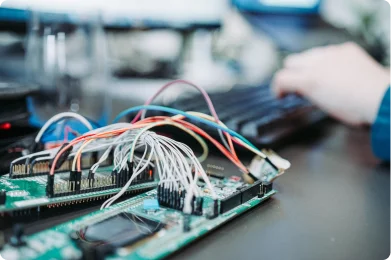By Seth Robinson, Senior Director of Technology Analysis, CompTIA
It’s an age-old problem (pun intended): managing a diverse group of employees with differing habits, priorities and opinions.
No generation ever seems to believe that its younger counterparts have similar work ethics or have as much respect for their elders. Today’s Millennials often feel that those ahead of them “just don’t get it”…and vice versa. Both may be closer than we’d care to admit, thanks to the increasing utilization of technology in our personal and business lives.
CompTIA has taken a much closer look at the growth of digital organizations this year and, as the name implies, the new uses of technology. These advances are undoubtedly tied to the increased adoption of the cloud, mobility and the consumer device market. The technologies, however, are just a part of the overall digital equation. Cloud and mobility are helping fuel this new wave of IT, but the behavioral changes they drive inside the organizations may be having an even greater impact.
At a corporate level, businesses are dealing with process and workflow modifications while grappling with their long-term technology strategies. At an employee level, a new generation of worker is bringing its own, unique business approach and different level of technical abilities. That blending is the focus of CompTIA’s latest study, Managing the Multigenerational Workforce, which looks at the various stereotypes, priorities, and preferences with Baby Boomers, Gen Xers, and Millennials.
First off, this report finds that many of the stereotypes projected on each generation are not universally accepted. In fact, the findings suggest that each group has certain strengths and weaknesses in the workforce and the blending of these factions produces a more diverse set of views. That combination can create a distinct work environment that, if managed properly, can boost productivity and creativity.
That provides a great opportunity for companies ready and willing to take advantage. For example, employees now evaluate organizations based on technical capabilities when considering where they would like to work. The importance of that factor has grown over time—14% of Baby Boomers indicated that corporate technology plays a part in their employment decisions while 21% of Gen Xers and 34% of Millennials express similar thoughts. That shows that strong technology strategies are not only important for overall organizational success and growth, but for the recruitment and retention programs as well.
Corporate communications provides a great example, where consumer behavior is clearly having an impact. Email is still the dominant messaging platform with 72% of workers regularly using Microsoft Outlook and Gmail garnering 41% (some use both). Instant messaging and video chat are also gaining ground, including Skype (30%) and Microsoft Lync (22%). Other tools that combine mobility and social aspects are still in the early stages of adoption, including Chatter (7%), Yammer (6%), and Slack (4%). Millennials tend to adopt the latest communications platforms more readily than Baby Boomers and Gen Xers, and may gravitate more to businesses that incorporate them in the workplace.
Another shifting dynamic is telecommuting. Thanks to mobile technologies and readily available Internet access, workers can be productive both inside and outside the traditional office environment. Many employees prefer more flexible work arrangements, but that doesn’t mean they want to abandon their workplace altogether. As a matter of fact, just 21% of the survey respondents want a schedule where they would only like to be in their offices 1 or 2 days a week. 44% of workers prefer to spend 1 or 2 days at home, while 35% like a Monday through Friday commute. Baby Boomers are less likely to enjoy telecommuting, while Gen Xers and Millennials both expect that option as a worker benefit.
What does it all mean? For employers, creating an optimal work environment has gotten more difficult (or so it seems). Technology has changed expectations and companies continue to shift their workforce operations to find the right formula. The increase in Millennial hires gives solution providers an opportunity to drive more overall technology strategies with their clients, rather than simply managing their individual pieces. Collectively, they can innovate processes, communication systems that highlight modern applications, and transition infrastructure to allow for a more flexible workforce. Most of all, channel firms can take the lead to help their customers adapt to these generational changes.
The Generational Gap: Reality of Perception?
23 December 2015
Grow and transform your business with new…
- Operational efficiencies for back-office processes.
- Sales through partnerships.
Network smarter with other leaders.
Related Posts



